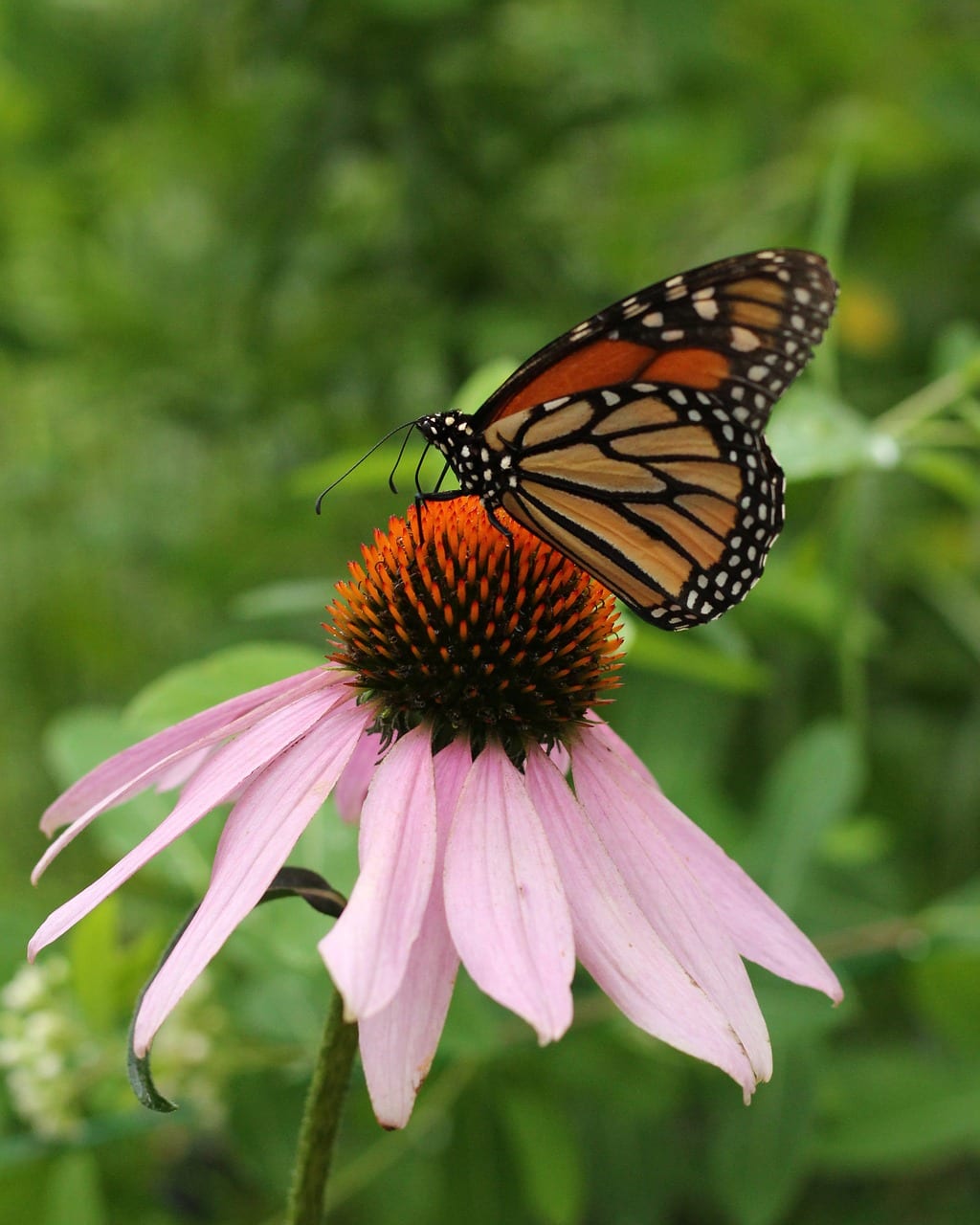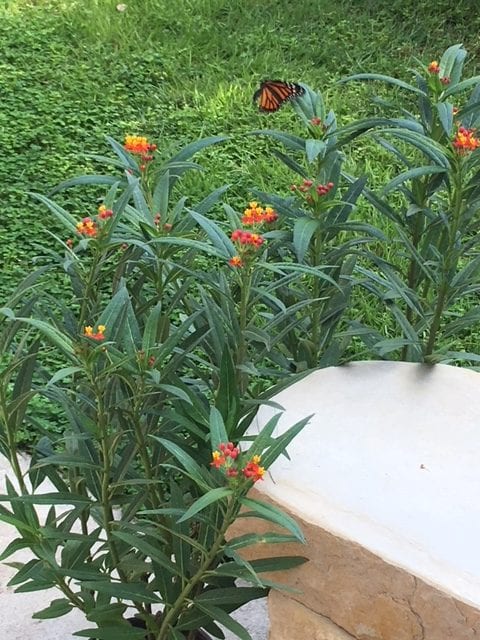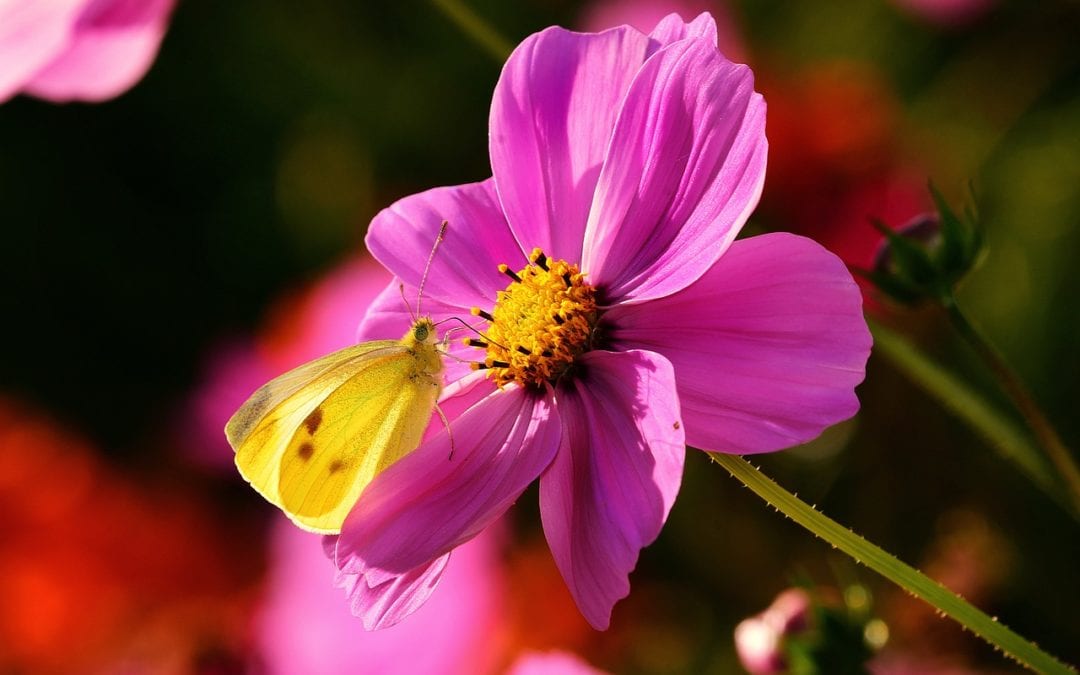Today’s blogs lays out what you need to focus on if you want to attract pollinators to your San Antonio landscapes. Follow these 5 tips and you’ll be on your way to inviting pollinators of all types to your gardens. Be sure to check out the extra links for more helpful info.
1. Eliminate the use of Pesticides
By eliminating or drastically limiting the use of pesticides in your garden, you greatly increase the chances of pollinators visiting your gardens. Pesticides, no matter how low the potency, even if the label is organic, can leave harmful residue on your plants that can cause harm or death to visiting pollinators and beneficial insects. Even if you are not spraying your pollinator attracting plants, a slight wind can cause pesticides to drift to them.
- For example, butterflies like Monarchs seek out their host plant, milkweed, to lay their eggs upon. If you’ve been spraying milkweed to rid them of pests such as aphids, you are also subjecting the Monarch eggs, and hatched caterpillar larvae to that pesticide as well. Pesticides can be absorbed through the bodies, ingested by the pollinators, or both.
- Always remember that pesticides are not selective. You can’t simply spray a product for one pest and hope it won’t affect another. Anything used to prevent and eliminate harmful pests will also harm beneficial insects and our pollinators. The blunt way to put it is that you can’t have a bunch of pollinators in your gardens if you are killing them off with pesticides. Leave the pesticides our of the equation and allow the beneficial insects to come in and do the dirty work for you. Nature has a way of being able to take care of itself if we just step aside and let it.
2. Offer the Pollinators Plenty of Nectar Sources
Native nectar sources provide our native pollinators with the sustenance and energy they need to survive and thrive. Offering a variety of nectar sources to pollinators greatly increases the chances of bringing them into your landscape. A bevy of nectar plants in your landscape is like having the best brunch buffet in town. Offering pollinators the plants with the qualities they seek out specifically will give you even better chances at seeing nature’s helpers (see more about this here). Before you know it, word will get out and you will have a pollinator wonderland swirling around right outside your very own windows! See our favorite nectar plants here.

3. Offer Pollinators Water
Nectar sources are a huge need, but pollinators need things as simple as a water source too. A fresh water source is a thrill for dusty, hot birds to either sip from or take a quick bath. Butterflies and bees delight in a fresh drink too, and areas that can puddle up are a great spot for butterflies to also replenish themselves with nutrients and salt.
4. Offer Pollinators Their Favorite Host Plants
Imagine a butterfly sipping from a delicious, vibrant, nectar-filled flower, then seeing a favorite host plant on which to lay their eggs. Butterflies will search for the perfect plant; a healthy specimen that looks like it will have plenty of sustenance for their offspring. The more options you have for them to choose from, the better. We’ve compiled some lists for you of some favorite hosts plants for San Antonio, and we encourage you to take a look through them and see about incorporating a variety of them into your landscape. Let’s do right by the pollinators that do so right by us!

5. Give pollinators a place to rest safely.
Yes you can go out and buy a manmade birdhouse or insect house, but you can also let nature provide shelter to the pollinators in multiple forms. Piles of leaves, logs left to decompose, some old wood left on a few shrubs or trees can create little pockets of safety for a multitude of pollinators to rest in. Butterflies also love nice flat rocks in a sunny area in the garden where they can rest and “get charged” with energy from the sunlight for their endless flights.
That’s it in a nutshell. Be sure to join us at the Monarch Butterfly and Pollinator Festival down at the historic Pearl District (we’ll be down there on the 20th of Oct.), and also at our Monarch class at our Bandera location on the 26th of October, to learn more about and celebrate the wonderful pollinators of San Antonio.
~The Happy Gardener, Lisa Mulroy


Thanks for providing this information. I’ll use it to my advantage.
Happy to help!